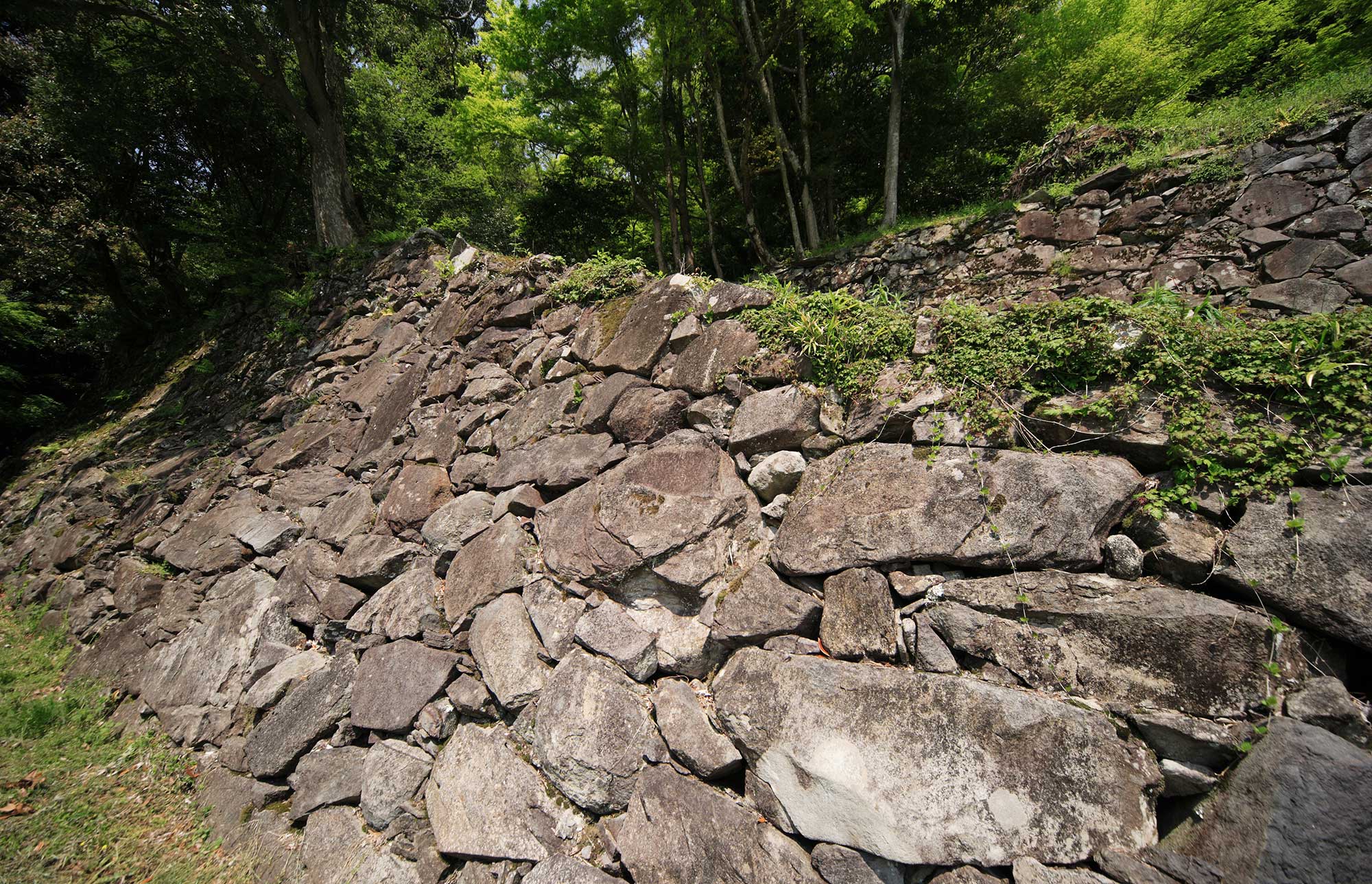

- Kensei Area
- Ruins・Ruined Castle
Mount Tsunomure and Tsunomure Castle Ruins
Photography/TAKEUCHI Yasunori
the Impregnable Mountain Castle
Close to the northern edge of the Kusu Basin, there stands the Mount Tsunomure of 576 meters in height. The mountain that serves as a symbol of the Mori district of Kusu. It is lower than other mountains around the basin, but the figure is quite prominent, in a landform called butte where the top of the table-like mountain (mesa) is smaller. Utilizing the topography, the mountain castle was built in the old days. The castle was called Tsunomure Castle. Very difficult to attack, it is said to be the symbol of Kusu, historically as well.
Written with two different characters, the town and the castle are both called “Tsunomure”. From the character, you may imagine a legend of burying a horn, but actually “Mure” means mountain in old Korean. In Oita, there are many mountains with “Mure” in their names, including Mount Kumamure and Mount Hanamure. “Tsuno” refers to the shape of a horn like of a cow. In other words, the mountain looks like a horn.
A theory says the castle was built by Hachirou Chinzei (Minamoto no Tametomo), and well, the truth we all know is that it has been there since long ago. As there is a record of the Mori clan who was the feudal lord of the area around the end of 13th century, the castle might have been built then, but more certainly, “the Kusutsu no Mure no Shiro (Castle of Kusutsu Mountain)” appears in a literature of the 15th century.
Since then, it has been passed down from generation to generation as the Mori clan’s residence, and played various roles every time there was a battle during the Otomo clan’s reign. The name became widely known during the Bungo invasion of Satsuma and Shimazu forces in 1586. Many castles in Bungo had been destroyed in the course of battle of Hosatsu, but Tsunomure Castle was one of the very few that survived along with the Oka Castle, keeping Shimazu forces away.
The ruins of the castle drew attention in 1993, when a large stone wall by a method called Ano Zumi (group of stone wall technicians called Ano-shu piling up the natural stones) was found. The ruins of Ote-mon (front) gate and a fort have also been discovered, and are regarded as important castle ruins to learn about the transition period when the Oda and Toyotomi clan were established. With the research in progress, they are registered as a national designated historical site. The foot of the mountain is the ruins of Mori-clan, Kurushima’s jinya (administrative headquarter). Now serving as the main venue for the Japan Douwasai (Fairy Tale Festival). The activity of utilizing the nature and the history of the mountain into the community development by a group called “Tsunomure-kai” is also drawing attention.

Mount Tsunomure, a popular symbol of Mori district in Kusu.

